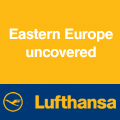
 Business travellers used to compare notes on the awfulness of their experiences while in pursuit of their company's interests around the country or the world, but a steady accumulation of small improvements and additional facilities have made the life of the business traveller not only easier but also more productive.
Business travellers used to compare notes on the awfulness of their experiences while in pursuit of their company's interests around the country or the world, but a steady accumulation of small improvements and additional facilities have made the life of the business traveller not only easier but also more productive.
A significant proportion of business travel is still car borne and those readers who've ever undertaken a long business trip by car will know that the big frustrations are being out of touch, being stuck in traffic, and the places that you need to get through in order to reach your destination.
We all thought that being out of touch had been banished until recently when the use of hand held mobile phones while driving was banned. But many were already using hands free kits to continue conversations whilst driving. The latest capabilities of mobile phones linked to the in-car stereo allow any radio broadcast or a CD playing to be over ridden when a telephone call comes in. This, combined with voice activated controls for the telephone mean that a call can be taken without the driver needing to take their eyes from the road.
Satellite Navigation (SatNav) systems can get drivers to their destinations, but also have other capabilities to avoid delays through road works or accidents. Either by alerting the driver to a potential delay on the planned route and suggesting an alternative or by plotting a wholly new route when a driver leaves the planned road to avoid standing traffic, SatNav can save time and considerable stress. It can also indicate the nearest filling station when the tank gets low and can indicate the locations of speed cameras and radar speed traps; facilities which, of course, no good driver would need.
And last but by no means least, the road network itself is constantly improving with a growing number of bottlenecks bypassed, great for drivers who wish to get on and great for locals who tend not to miss the traffic in their high street. The very latest Birmingham North Relief Road actually bypasses the busy M6 and the notorious 'Spaghetti Junction' with a tolled option for those whose time is money.
Trains have also improved over recent years. Booking can be carried out online to save time and ensure that the ticket covers exactly the journey required. Some newer trains also offer on board entertainment modules at the seat. On train shops have improved from the old (and, too often, closed) buffet counter to large retail areas offering a range of hot and cold food and drinks, CDs, DVDs and books. Also, while "Quiet Zones" may not allow mobile phones to be used, they do provide excellent places to write up notes and reports or to read close typed tables of statistics.
And the latest very fast trains running on rebuilt tracks put more business destinations within the "one day out and back" category to save on hotel bills and time away. This is particularly true on those routes that use the Channel Tunnel with its high speed rail link, offering fast journeys to Paris Brussels and other European cities, plus the ability to take a car and passengers across the channel in about twenty minutes.
Railways also increasingly provide links to the major airports using purpose built trains offering level access to platforms and covered access to airport terminals. The time saving and convenience can be sufficient to make air travel seem more like the city centre to city centre capability of the railways and can make one day out and back business trips more feasible. (For more on business services for rail travellers, see Norman Flack's article in this issue.)
Indeed, with some airports, such as London City and Belfast City built in former docklands areas, centre to centre flights are a reality. And, although the use of mobile phones on board is still a "no, no" for airline passengers (this won't always be the case) new and newly fitted business and first class sections (plus most seats on busier US commuter flights) offer telephones at the seat. As with the railways, airline passengers can book their flights, car parking (if needed) and car hire, at destination, on line.
As well as the well established Business Centres at major airports and rail terminals, so called "hot spots" are springing up in places where business travellers can be found and where they may wish to check and send emails. But, in these early days of such things, it is still wise to be aware of security issues; Microsoft recommends setting your firewall to "Don't allow exceptions" when you connect to a public network in less secure places such as airports.
These days, the notion of seaborne business travel is less frequently considered but there are distinct advantages to using the many ferries that link the UK with different parts of the Continent and Ireland. Your vehicle will be with you when you arrive and there will be the opportunity to take a rest, especially during the longer voyages.
While none of the above have the "Star Trek" factor about them - we all carry a hand held communicator now - they have all generated small increments in the quality and capability of business travel to reduce fatigue, time used and cost while increasing the number of places that can be covered during a business trip. The secret is to consider the business purpose of the trip and then select the most appropriate schedule and travel mode to achieve that purpose.







